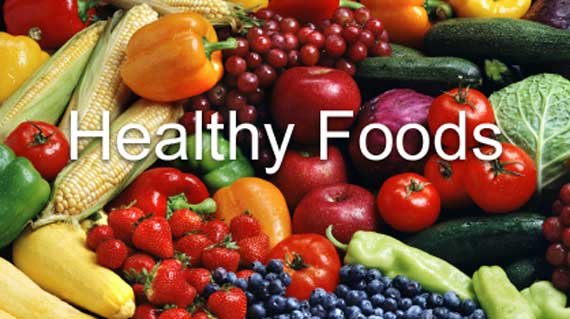Diet for Healthy Skin
After my post on the Acne article I had a request for a list of foods to help with certain skin conditions.
Apologies for the delay!!
I hope this is useful.
"Your skin is the fingerprint of what is going on inside your body, and all skin conditions are the manifestations of your body's internal needs, including its nutritional needs."
Beautiful, glowing, unblemished skin involves many factors, including a nutrient-dense diet for healthy skin and the prevention of various skin disorders. Are there certain foods that can enhance the appearance of your skin, deter wrinkles from forming and nourish your skin cells for a lifetime of health and radiance? Indeed, the choices you make today do impact your appearance now and in the years to come.
Basic Guidelines for a Diet for Healthy Skin
Since your skin is the largest organ of your body, it requires optimal nourishment and feeding it well is necessary for a lifetime of quality health. Eating a balanced diet full of fruits, vegetables, whole grains, unsaturated fats and lean protein is essential to supply the skin with the nourishment it requires. General guidelines to include in a diet for healthy skin recommended by skincare specialists and nutritionists include:
Drinking 60-70 ounces of water per day for hydration of the skin
A hefty supply of antioxidants, mainly vitamin A, C, E and selenium (referred to as the ACES). See below for more specifics.
Omission of refined sugars to decrease incidence of inflammation, a known skin assailant
An adequate amount of lean protein for the repair and growth of muscle fibers in the face and throughout the body
Plenty of essential fatty acids for the proper lubrication of cells, including skin cells, which enhance appearance
A quality multivitamin to supply skin with essential vitamins and minerals, such as zinc, vitamin C, B-complex, vitamin E and vitamin A, to name a few
Antioxidant Power
Free radicals occur in the human body constantly. They are by-products of every breath we take, every beat of our heart and every morsel of food we digest. Sun damage to the skin is the result of the free radical process, as is wrinkling of the skin. However, there is an antidote in our food supply for all this free radical activity. It is known as the antioxidant. As mentioned above, the ACES are powerful players in the fight to retain optimal skin health. The following foods are chock-full of antioxidants and are mandatory in an effective diet for healthy skin:
Vitamin A-rich foods
Broccoli
Spinach
Kale
Halibut
Cod
Red peppers
Vitamin C-rich foods
Citrus fruits
Strawberries
Cantaloupe
Tomatoes
Vitamin E-rich foods
Almonds
Asparagus
Avocado
Olives
Sunflower seeds
Selenium-rich foods
Nuts
Garlic
Poultry
Besides the antioxidants, zinc is a well-researched mineral that helps diminish reddened skin areas. Zinc is abundant in nuts, poultry, salmon and oats. Supplemental dose recommendation is 30 milligrams. The B vitamins are also highly recommended for the health of the skin, hair and nails. Eating plenty of legumes such as chickpeas, pinto beans, nuts and fatty fish (salmon and mackerel) will ensure that a B-vitamin deficiency is not present.
Diet for Skin Problems

Just as a diet for healthy skin is important for keeping skin in the best shape possible, a diet can cause or exacerbate a variety of skin disorders. For example, a poor diet is known to aggravate eczema. Avoiding possible food allergens, such as the most common milk, eggs, wheat, soy and peanuts, has been shown to improve the condition drastically. In fact, one study found a 75% improvement in eczema conditions when food allergens were eliminated from the diet. The omega-3 fatty acids found in fish and flaxseeds has been proven to decrease inflammation which is a major indicator of eczema and similar reactions of the skin. Quercetin is a powerful flavonoid also identified as an inhibitor of histamine release, thus lowering the incidence of inflammation. An appropriate dose of quercetin is 400 milligrams taken about 20 to 30 minutes before a meal. Finally, since eczema patients typically have low levels of zinc when tested, supplementation may be helpful as it is a required mineral for the metabolism of essential fatty acids.
Additional skin disorders affected by dietary intake include acne, rosacea and seborrheic dermatitis.
For example, acne appears to be the direct result of refined sugars, trans fats and high levels of iodine in the diet. By eliminating these foods, inflammatory reactions are greatly reduced and result in fewer breakouts. Rosacea, a chronic acne-like condition, has been shown to result from a B-vitamin deficiency.
Also, avoiding foods and beverages that cause flushing of the skin, such as alcohol, is a known cure for keeping the skin eruptions to a minimum. Seborrheic dermatitis is as common as eczema, and its preventative measures are similar.
Eliminating possible food allergens, as well as adding zinc and omega-3 fatty acid to the diet, can help. A B-vitamin deficiency and a low level of biotin have been identified in most persons with this skin disorder.
For this reason, a diet for healthy skin and a decreased occurrence of eruptions would include foods rich in these food components or supplementation.











